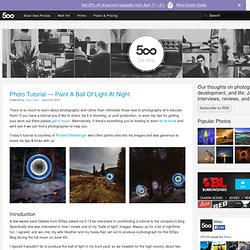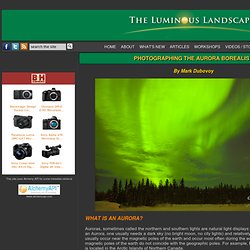

Capturing the Northern Lights in Timelapse Video. A Post By: Phil Hart A guest post by Phil Hart – author of the Shooting Stars eBook (use code DPSTARS for a 25% discount).

In this post, I’d like to share the back story to a new video I have released after a nine week ‘extreme astronomy’ adventure in the Yukon earlier this year, where I went to capture timelapse footage of the Northern Lights (the ‘Aurora Borealis’). First the video, ‘Valentine’s Aurora’, which I hope you will enjoy with the lights down and the music up: Valentine’s Aurora from Phil Hart on Vimeo. The Location All of the footage for this video (except the fisheye sequences) was shot on Annie Lake Road, south of Whitehorse the capital of Canada’s Yukon Territory.
It was the 14th February, and only my second night out on location away from home base where I was staying on the shores of Shallow Bay, Lake Laberge, to the north of Whitehorse. On location at Annie Lake Road: Canon 5D Mark II, 14mm lens, 30 secs, f2.8, ISO800 Camera Gear and Exposure Settings Composition. Blog / How to paint a ball of light. There is so much to learn about photography and rather than intimidate those new to photography let’s educate them!

If you have a tutorial you’d like to share, be it in shooting, or post production, or even top tips for getting your work out there please get in touch. Alternatively, if there's something you're looking to learn let us know and we'll see if we can find a photographer to help you. Today's tutorial is courtesy of Richard Steinberger who often paints orbs into his images and was generous to share his tips & tricks with us. Introduction A few weeks back Debbie from 500px asked me if I'd be interested in contributing a tutorial to the company's blog. I figured it wouldn't do to produce the ball of light in my front yard, so we headed for the high country about two hours southwest of Denver, Colorado. One of those peaks was Square Top Mountain, pictured below. A Storm Coming Unfortunately, the weather didn't clear as we had hoped. What to do? A Ball Of Light Painting Great Advice. 21 Sample Poses to Get You Started with Photographing Female Subjects.
This is the first in a series of Posing Guide posts by Kaspars Grinvalds from Posing App See below for links to the full series of posing guides including for kids, men, couples, weddings and more.

Check out our new Portrait Posing eBook and Portrait Posing Printables for more advice and posing ideas. If you ever run out of ideas, get stuck in creativity or simply need some guidance when shooting female subjects, you may use following posing samples as a “posing cheat sheet”. Many pro photographers use such a technique when preparing for and during the photo shoot. The poses in this article are selected as initial reference. I would advise to look at the poses together with your subject, especially if she’s inexperienced. OK, let’s start, one by one. 1. 2. 3. 4. 5. 6. 7. 8. 9. 10. 11. 12. PHOTOGRAPHING THE AURORA BOREALIS. Auroras, sometimes called the northern and southern lights are natural light displays in the sky.

In order to see an Aurora, one usually needs a dark sky (no bright moon, no city lights) and relatively clear weather. Auroras usually occur near the magnetic poles of the earth and occur most often during the equinoxes. Note that the magnetic poles of the earth do not coincide with the geographic poles. For example, the Magnetic North Pole is located in the Arctic Islands of Northern Canada. The name Aurora Borealis is attributed to Pierre Gassendi, a 17th century French philosopher, astronomer and mathematician. Charged “solar wind” particles (mostly electrons) travel from the Sun towards the earth at high speeds. As these particles enter the upper layers of the earth’s atmosphere, they collide with the atoms and molecules in that region, mostly Oxygen and Nitrogen.
Oxygen atoms, for example, emit photons in two typical colors: green and red. April, 2010 Mark Dubovoy About Mark Dubovoy Dr.